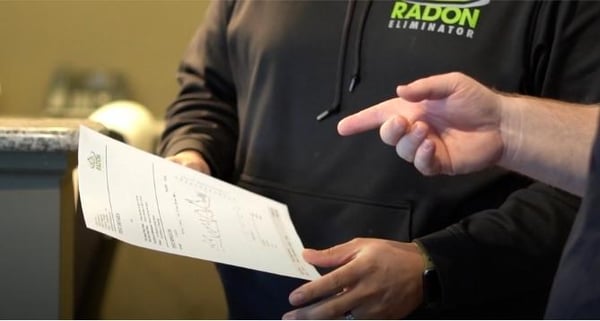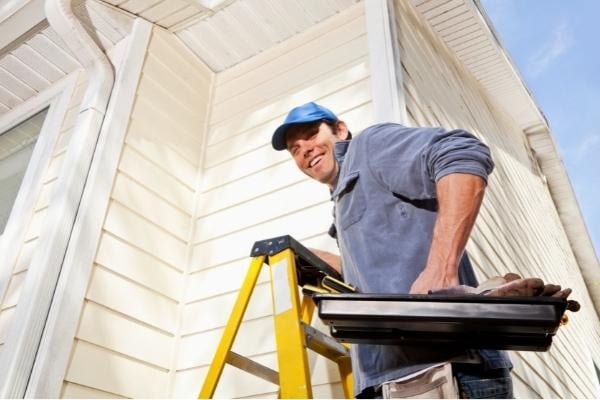If you are worried your home has high radon levels, don't worry.
The first thing you need to do is have radon testing done in your home.
If the radon testing results show that you have elevated radon levels, there's no need to panic.
There are a few types of radon mitigation that can reduce your home's radon levels to a safe point.
Some techniques prevent radon from entering, and others reduce radon levels after it has entered.
But, do these techniques actually work?
In the article below, we will learn about radon mitigation and if it really works.
Perhaps you are looking to install a radon mitigation system because you are hoping to sell your home. Read our blog post: Can I Sell My Home if it Has High Radon Levels?
Table of Contents
- What Is Radon Mitigation?
- What Does A Radon Mitigation System Cost?
- How Effective Are Radon Mitigation Systems?
- How Much Maintenance Do Radon Mitigation Systems Require?
- Radon Eliminator
What is Radon Mitigation?
Suppose you have radon testing performed in your home, and your radon levels come back high. In that case, a radon mitigation professional will determine what type of radon mitigation system you will need to install to emit the gasses from your home.
When a professional radon company tests your home, they will test the lowest level of your home, whether that's a basement or a crawl space.
The lowest level of your home will have the highest levels, and radon gas moves up into your home from there.
A professional radon contractor will install equipment in your home, including a radon vent pipe and a radon fan, that will release the radioactive gases from the interior of your home to the outside.
Radon mitigation aims to reduce radon levels below 4.0 picocuries per liter (pCi/L).
Ideally, your radon mitigation system will reduce your average radon level far below 4.0pCi/L.
Your system will either prevent radon from getting into your home or reduce the radon levels already in the house.
Mitigation systems can divide into either active or passive systems.
- Active radon mitigation system: A common radon reduction method is an active radon mitigation system. These systems use a radon fan to move radon outside the home via a radon vent pipe usually installed in an attic.
- Passive radon mitigation system: Passive radon mitigation systems use a radon vent pipe without a radon fan but do the same thing.
Passive radon systems are most often used in new construction to keep radon levels from building up inside the home.
Contractors typically work with a radon professional to properly install the system.
If the radon levels inside a home are extremely high (above 8 pCi/L), passive systems generally won't move enough radon out of the house.
Active systems are preferred because they do the best job of keeping your radon levels very low, ensuring your family is safe from high exposure.
Fortunately, an experienced radon specialist can generally upgrade a passive system to an active system if your home has high levels.
You should utilize qualified radon professionals to install an active or passive radon mitigation system if you're building a new home.
Having a professional install your system is the best way to ensure your radon mitigation system will work properly.
If you have a home with a passive radon mitigation system, be sure to test your radon levels to ensure that they never get too high.

What Does A Radon Mitigation System Cost?
Typical radon systems installation costs will vary depending on local labor rates and whether or not the home is already furnished.
Basic radon suction systems typically cost from $1,000 to $3,500.
Block-wall suction systems cost up to $5,000 or more.
If you need a pressurized system, it will usually set you back around $1,000 to $2,500.
Active suction and pressurization systems consume electricity around the clock and sometimes cause heat loss.
This variation depends on the design of the system and your local weather conditions.
Again, this depends on your local climate, but annual electric cost and maintenance run between $200 and $500.
The cost of radon removal may seem high, but it's not that bad when the alternative is lung cancer.
How Effective Are Radon Mitigation Systems?
Active suction systems have shown the potential to reduce the concentration of radon in homes by 50% to 99%
Passive suction systems reduce concentrations by only 30% to 70%.
But again, if your radon gas concentrations are at the low end of the scale, a passive system may work just fine.
You can always add a radon fan later if your radon levels increase.
Pressurization systems are also effective and can reduce radon concentrations by 50% to 99%.
With a pressurization system, though, the doors to the lower level and lower level windows must be kept closed and sealed at all times.
That's not very practical if you use your lower level as a living space.

How Much Maintenance Do Radon Mitigation Systems Require?
Radon mitigation systems, for the most part, are pretty self-sufficient.
But, like other systems in your home, like furnaces and chimneys, they will need occasional maintenance.
Most radon systems have a warning device that will warn you when they aren't working effectively.
Keep an eye on your system to ensure it's still working correctly.
Most radon mitigation systems use fans, and the fans typically need to be replaced or repaired every five years.
If your fan stops working, it needs fixing as soon as possible because it will not work without it.
Experts recommended performing annual maintenance on your radon system to ensure it's working effectively.
Radon Eliminator
The team at Radon Eliminator in Ohio understands that radon is something to worry about and that radon poisoning poses severe health risks.
If you're worried your home might have elevated levels of radon, or you're worried you have symptoms of radon poisoning, you should have your home tested right away.
Fortunately, radon mitigation systems are worth it and have proven to work effectively.
No level of radon exposure is safe, so contact a professional radon company to have your home tested as soon as you can.
Radon Eliminator can test your home, and if your radon levels come back high, we can install a professional radon reduction system to lower the radon levels in your home.
To take action and get started with Radon Eliminator, click the button below for a discounted test.





